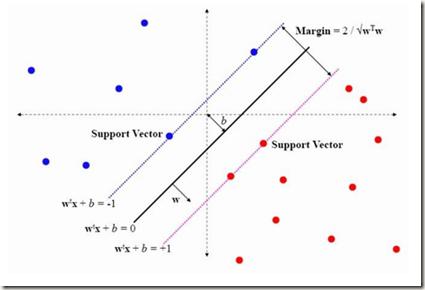We investigate a method to extract relations from texts based on global alignment and syntactic information. Combined with SVM, this method is shown to have a performance comparable or even better than LSTM on two RE tasks.
相關內容
In this paper, we propose a novel Feature Decomposition and Reconstruction Learning (FDRL) method for effective facial expression recognition. We view the expression information as the combination of the shared information (expression similarities) across different expressions and the unique information (expression-specific variations) for each expression. More specifically, FDRL mainly consists of two crucial networks: a Feature Decomposition Network (FDN) and a Feature Reconstruction Network (FRN). In particular, FDN first decomposes the basic features extracted from a backbone network into a set of facial action-aware latent features to model expression similarities. Then, FRN captures the intra-feature and inter-feature relationships for latent features to characterize expression-specific variations, and reconstructs the expression feature. To this end, two modules including an intra-feature relation modeling module and an inter-feature relation modeling module are developed in FRN. Experimental results on both the in-the-lab databases (including CK+, MMI, and Oulu-CASIA) and the in-the-wild databases (including RAF-DB and SFEW) show that the proposed FDRL method consistently achieves higher recognition accuracy than several state-of-the-art methods. This clearly highlights the benefit of feature decomposition and reconstruction for classifying expressions.
In this paper, we present a novel method named RECON, that automatically identifies relations in a sentence (sentential relation extraction) and aligns to a knowledge graph (KG). RECON uses a graph neural network to learn representations of both the sentence as well as facts stored in a KG, improving the overall extraction quality. These facts, including entity attributes (label, alias, description, instance-of) and factual triples, have not been collectively used in the state of the art methods. We evaluate the effect of various forms of representing the KG context on the performance of RECON. The empirical evaluation on two standard relation extraction datasets shows that RECON significantly outperforms all state of the art methods on NYT Freebase and Wikidata datasets. RECON reports 87.23 F1 score (Vs 82.29 baseline) on Wikidata dataset whereas on NYT Freebase, reported values are 87.5(P@10) and 74.1(P@30) compared to the previous baseline scores of 81.3(P@10) and 63.1(P@30).
Dependency trees convey rich structural information that is proven useful for extracting relations among entities in text. However, how to effectively make use of relevant information while ignoring irrelevant information from the dependency trees remains a challenging research question. Existing approaches employing rule based hard-pruning strategies for selecting relevant partial dependency structures may not always yield optimal results. In this work, we propose Attention Guided Graph Convolutional Networks (AGGCNs), a novel model which directly takes full dependency trees as inputs. Our model can be understood as a soft-pruning approach that automatically learns how to selectively attend to the relevant sub-structures useful for the relation extraction task. Extensive results on various tasks including cross-sentence n-ary relation extraction and large-scale sentence-level relation extraction show that our model is able to better leverage the structural information of the full dependency trees, giving significantly better results than previous approaches.
Entity and relation extraction is the necessary step in structuring medical text. However, the feature extraction ability of the bidirectional long short term memory network in the existing model does not achieve the best effect. At the same time, the language model has achieved excellent results in more and more natural language processing tasks. In this paper, we present a focused attention model for the joint entity and relation extraction task. Our model integrates well-known BERT language model into joint learning through dynamic range attention mechanism, thus improving the feature representation ability of shared parameter layer. Experimental results on coronary angiography texts collected from Shuguang Hospital show that the F1-score of named entity recognition and relation classification tasks reach 96.89% and 88.51%, which are better than state-of-the-art methods 1.65% and 1.22%, respectively.
In relation extraction for knowledge-based question answering, searching from one entity to another entity via a single relation is called "one hop". In related work, an exhaustive search from all one-hop relations, two-hop relations, and so on to the max-hop relations in the knowledge graph is necessary but expensive. Therefore, the number of hops is generally restricted to two or three. In this paper, we propose UHop, an unrestricted-hop framework which relaxes this restriction by use of a transition-based search framework to replace the relation-chain-based search one. We conduct experiments on conventional 1- and 2-hop questions as well as lengthy questions, including datasets such as WebQSP, PathQuestion, and Grid World. Results show that the proposed framework enables the ability to halt, works well with state-of-the-art models, achieves competitive performance without exhaustive searches, and opens the performance gap for long relation paths.
State-of-the-art models for joint entity recognition and relation extraction strongly rely on external natural language processing (NLP) tools such as POS (part-of-speech) taggers and dependency parsers. Thus, the performance of such joint models depends on the quality of the features obtained from these NLP tools. However, these features are not always accurate for various languages and contexts. In this paper, we propose a joint neural model which performs entity recognition and relation extraction simultaneously, without the need of any manually extracted features or the use of any external tool. Specifically, we model the entity recognition task using a CRF (Conditional Random Fields) layer and the relation extraction task as a multi-head selection problem (i.e., potentially identify multiple relations for each entity). We present an extensive experimental setup, to demonstrate the effectiveness of our method using datasets from various contexts (i.e., news, biomedical, real estate) and languages (i.e., English, Dutch). Our model outperforms the previous neural models that use automatically extracted features, while it performs within a reasonable margin of feature-based neural models, or even beats them.
Generating character-level features is an important step for achieving good results in various natural language processing tasks. To alleviate the need for human labor in generating hand-crafted features, methods that utilize neural architectures such as Convolutional Neural Network (CNN) or Recurrent Neural Network (RNN) to automatically extract such features have been proposed and have shown great results. However, CNN generates position-independent features, and RNN is slow since it needs to process the characters sequentially. In this paper, we propose a novel method of using a densely connected network to automatically extract character-level features. The proposed method does not require any language or task specific assumptions, and shows robustness and effectiveness while being faster than CNN- or RNN-based methods. Evaluating this method on three sequence labeling tasks - slot tagging, Part-of-Speech (POS) tagging, and Named-Entity Recognition (NER) - we obtain state-of-the-art performance with a 96.62 F1-score and 97.73% accuracy on slot tagging and POS tagging, respectively, and comparable performance to the state-of-the-art 91.13 F1-score on NER.
We study the problem of textual relation embedding with distant supervision. To combat the wrong labeling problem of distant supervision, we propose to embed textual relations with global statistics of relations, i.e., the co-occurrence statistics of textual and knowledge base relations collected from the entire corpus. This approach turns out to be more robust to the training noise introduced by distant supervision. On a popular relation extraction dataset, we show that the learned textual relation embedding can be used to augment existing relation extraction models and significantly improve their performance. Most remarkably, for the top 1,000 relational facts discovered by the best existing model, the precision can be improved from 83.9% to 89.3%.
Most work in relation extraction forms a prediction by looking at a short span of text within a single sentence containing a single entity pair mention. This approach often does not consider interactions across mentions, requires redundant computation for each mention pair, and ignores relationships expressed across sentence boundaries. These problems are exacerbated by the document- (rather than sentence-) level annotation common in biological text. In response, we propose a model which simultaneously predicts relationships between all mention pairs in a document. We form pairwise predictions over entire paper abstracts using an efficient self-attention encoder. All-pairs mention scores allow us to perform multi-instance learning by aggregating over mentions to form entity pair representations. We further adapt to settings without mention-level annotation by jointly training to predict named entities and adding a corpus of weakly labeled data. In experiments on two Biocreative benchmark datasets, we achieve state of the art performance on the Biocreative V Chemical Disease Relation dataset for models without external KB resources. We also introduce a new dataset an order of magnitude larger than existing human-annotated biological information extraction datasets and more accurate than distantly supervised alternatives.
We report an evaluation of the effectiveness of the existing knowledge base embedding models for relation prediction and for relation extraction on a wide range of benchmarks. We also describe a new benchmark, which is much larger and complex than previous ones, which we introduce to help validate the effectiveness of both tasks. The results demonstrate that knowledge base embedding models are generally effective for relation prediction but unable to give improvements for the state-of-art neural relation extraction model with the existing strategies, while pointing limitations of existing methods.



